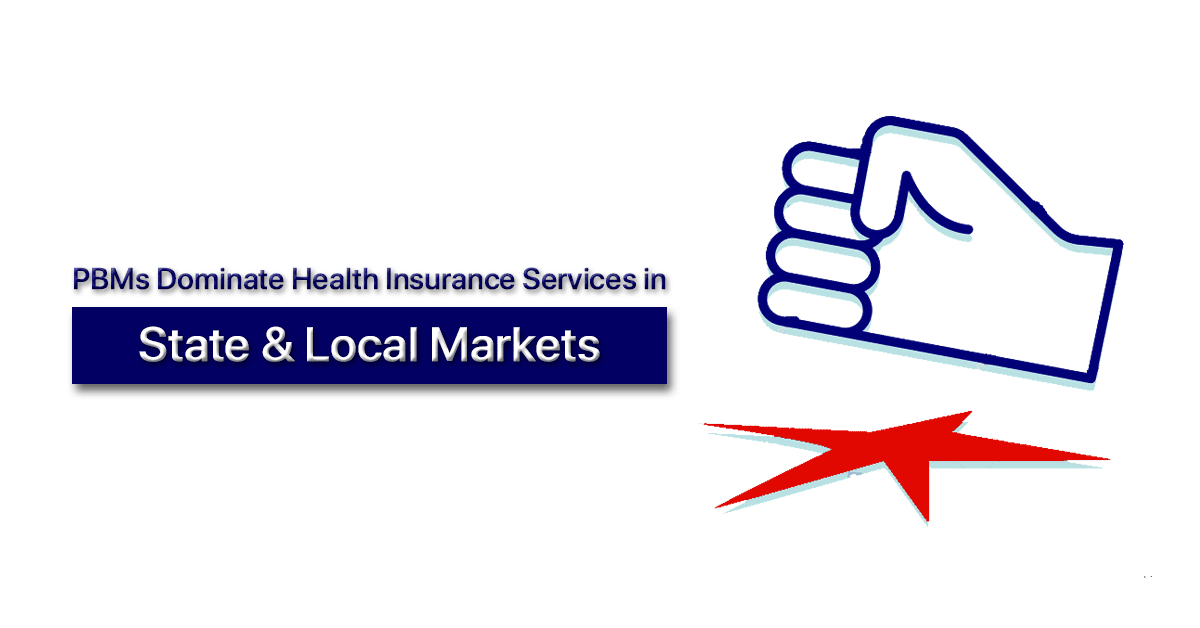Pharmacy benefit managers (PBMs) tend to dominate state and local markets where they provide services to commercial health insurers across the United States.
That could mean patients are stuck with higher prescription drug prices, according to new research published by the American Medical Association (AMA). The Policy Research Perspective report, “Competition in Commercial PBM Markets and Vertical Integration of Health Insurers with PBMs,” is the first to examine variations in PBM market share and competition at the state and metropolitan levels, according to AMA.
The analysis noted the history and importance of PBMs, along with claims that market consolidation and opaque pricing are driving up costs of pharmaceuticals.
“The American Medical Association already has serious concerns about PBM business practices that can have a detrimental impact on patients’ access to and cost of prescription drugs,” AMA President said in a news release.
PBM markets require careful scrutiny as less competition and more vertical integration can embolden anticompetitive business practices to the detriment of patients. The novel data presented by the AMA analysis is intended to help regulators, lawmakers, researchers, and policymakers better evaluate merger proposals in the future that may harm patients by raising prices, lowering quality, reducing choice and stifling innovation.
‘Highly concentrated’ services
The study found that instead of conducting the work in-house, commercial health insurers largely use PBMs for three services:
- Rebate negotiation
- Retail network management
- Claims adjudication
At the state and metropolitan levels, AMA found a high degree of market concentration for those services. PBM markets were “highly concentrated” in about 78% of states and about 85% of metropolitan areas.
At the national level, the 10 largest PBMs had a collective share of 97% of the market for those services. The top four claimed 66% of the market, and six PBMs are used exclusively by one insurer or a set of Blue Cross Blue Shield affiliates.
Vertical integration
AMA quantified the extent of vertical integration between PBMs and commercial health insurers. The study defined vertical integration as an insurer performing a PBM service in-house, or having a service supplied by a PBM that shares ownership with the insurer.
Nationally, health insurers that were vertically integrated with a PBM covered 69% of all people with commercial drug insurance. Percentages were slightly lower for states (63%) and metropolitan areas (65%), with wide variation among them.
For example, South Dakota had the smallest vertical integration share at 6%, while North Carolina topped the list at 97%.
The finding was significant because vertically integrated insurers may not allow competitors to access their PBMs, or could raise the cost of PBM services. “This could adversely affect no-vertically integrated insurers and ultimately patients through higher premiums,” according to AMA.
More public scrutiny
The association pledged to continue fighting anticompetitive actions in the health care sector. AMA’s concerns about the role of PBMs in prescription drug pricing, and noted the Federal Trade Commission has launched an inquiry into the business practices of the six largest vertically integrated PBMs.
The Pharmaceutical Care Management Association (PCMA), a PBM trade group, repeatedly has countered pricing allegations by laying blame on drug makers that set prices, not the PBMs that negotiate prices down.
“Unfortunately, instead of engaging in a constructive, pro-solution dialogue, the pharmaceutical industry continues to push a false narrative on the role of PBMs,” PCMA President wrote in The Hill earlier this year.
In April, FTC singled out PBMs instead of drug companies that set prices. The next month, PCMA issued a statement supporting legislation proposed by Iowa Republican.
We believe that policymakers need information that provides a guide to lower prescription drug costs for consumers, not an increase in revenue for drug manufacturers or pharmacies. An examination of prescription drug pricing that includes the entire prescription drug supply and payment chain will provide the information necessary to determine the factors increasing drug costs for consumers
For More Information: Ama pharmacy benefit managers dominate health insurance services in state local markets

